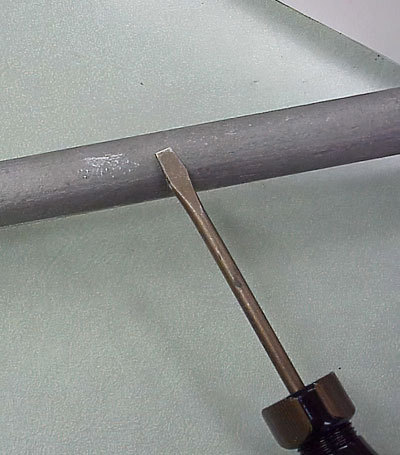Lead Service Line Inventory Project
Help Us Identify Lead In Residential Service Lines
In 2021, the U.S. Environmental Protection Agency (EPA) revised the Lead & Copper Rule (LCR), a series of regulations aimed at protecting public health by reducing the potential for exposure to lead through drinking water. These revisions added new protective measures specifically focused on mitigating exposure to lead from the nation’s public water systems and plumbing in private homes and businesses.
To find lead wherever it may be in every water system in the country, the EPA’s revised LCR contains a new requirement that all public water systems nationwide develop an “initial inventory” of their community’s water service lines and connections, including all the water lines and connections on private properties.
The revised LCR reporting will take effect in October 2024. CWEP is requesting your help to identify the types of service line materials used at your residence. The service line is the pipe that connects your home or building to the water main in the street. Service lines may be made of lead, copper, galvanized metal, or plastic.
Once you’ve identified the type of line used at your home, simply fill out the digital survey below. Questions? Give us a call today, (417) - 237-7300.
The drinking water provided to customers by CWEP does NOT contain lead. However, in homes built before 1986, lead service lines and plumbing fixtures made with lead components were common and can cause lead to enter residents' water through the corrosion process.
If you verify having a lead or galvanized service line, CWEP will follow up with you on next steps in accordance with state regulatory requirements. Don’t delay, verify today!
____________________________________________________________________________________________
CWEP 2024 Lead & Copper Rule (LCR) results are live!
Questions? Visit, Environmental Protection Agency (EPA) Lead & Copper Rule (LCR)
____________________________________________________________________________________________
____________________________________________________________________________________________
Identification Procedure
Tools Needed:
Flathead Screwdriver
Refrigerator Magnet
Locate the water service line coming into the building. this is typically found in the basement. An “inlet valve” and the water meter are installed on the pipe after the point of entry. (View the map below for details)
Identify a test area on the pipe between the point where it comes into the building and the inlet valve. If the pipe is covered or wrapped, expose a small area of metal.
Use the flat edge of a screwdriver or other tool to scratch through any corrosion that may have built up on the outside of the pipe.
____________________________________________________________________________________________
____________________________________________________________________________________________
Lead & Drinking Water
Carthage Water & Electric Plant (CWEP) conducts routine testing to ensure that our water meets all state and federal water quality requirements. Lead is not detected in CWEP drinking water when it leaves the treatment plant and there is no current concern about lead at large in our water system.
Lead contamination of drinking water is often the result of corrosion in the plumbing or water service lines belonging to customers.
If present, elevated levels of lead can cause serious health problems, especially for pregnant women and young children. Lead in drinking water is primarily from materials and components associated with service lines and home plumbing. CWEP is responsible for providing high quality drinking water but cannot control the variety of materials used in customer plumbing components.
CWEP takes water quality very seriously and your safety is our number one priority. When it comes to complying with strict federal regulation for delivering safe, quality drinking water, we’ve consistently scored among the highest of all water companies. Check out our water quality reports for more information! You can review our Annual Water Quality Report HERE!
Contact Us
CWEP Customer Support
Phone: 417.237.7300
Email Us
eCarthage Support
(Mon.-Fri., 8am-7pm) Phone: 417.237.7373
After Hours Phone: 417.237.7300
Email Us
Get Connected!
We want to help you stay up to date & in the know of all of the latest CWEP news & updates. Be sure to like, follow & connect with us on social media!








